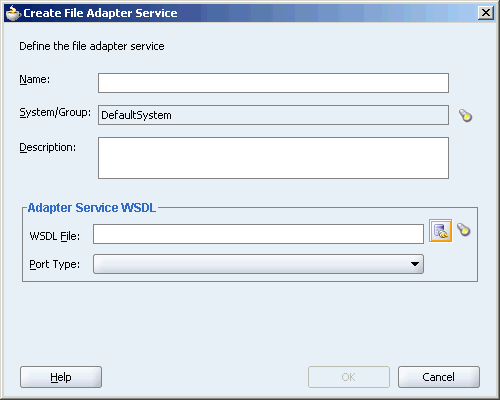| Oracle® Application Server Adapters for Files, FTP, Databases, and Enterprise Messaging User's Guide 10g Release 3 (10.1.3.1.0) Part Number B28994-02 |
|
|
View PDF |
| Oracle® Application Server Adapters for Files, FTP, Databases, and Enterprise Messaging User's Guide 10g Release 3 (10.1.3.1.0) Part Number B28994-02 |
|
|
View PDF |
This chapter describes the file, FTP, database, and enterprise messaging adapters that are provided with Oracle BPEL Process Manager and Oracle Enterprise Service Bus. The adapters enable you to integrate BPEL processes or ESB services to file systems, FTP servers, database tables, database queues (advanced queues, or AQ), message queues, Java Message Services (JMS), and Oracle Applications. See Oracle BPEL Process Manager Developer's Guide or Oracle Enterprise Service Bus Developer's Guide for information about BPEL processes or ESB services .
This chapter contains the following topics:
Section 1.1, "Technology Adapters Integration with Oracle BPEL Process Manager"
Section 1.2, "Technology Adapters Integration with Oracle Enterprise Service Bus"
See Oracle Application Server Adapter Concepts for information about application and mainframe adapters.
From the Partner Link dialog box in Oracle BPEL Process Manager, shown in Figure 1-1, you can access the adapters that are provided with Oracle BPEL Process Manager.
Click the Define Adapter Service icon, shown in Figure 1-2, to access the Adapter Configuration Wizard.
This wizard enables you to configure the types of adapters shown in Figure 1-3 for use with BPEL processes.
When you select an adapter type, the Service Name window shown in Figure 1-4 prompts you to enter a name. For this example, File Adapter was selected in Figure 1-3. When the wizard completes, a WSDL file by this service name appears in the Applications Navigator for the BPEL process (for this example, named ReadFile.wsdl). This file includes the adapter configuration settings you specify with this wizard. Other configuration files (such as header files and files specific to the adapter) are also created and display in the Applications Navigator.
See Oracle Application Server Adapter for Oracle Applications User's Guide for information on using the Oracle Applications adapter listed in Figure 1-3.
The Adapter Configuration Wizard windows that appear after the Service Name window are based on the adapter type you selected. These configuration windows and the information you must provide are described in later chapters of this guide.
You can access the adapters that are provided with Oracle Enterprise Service Bus through the Component Palette shown in Figure 1-5. When you select Adapter Services in Component Palette, all adapters supported in Oracle Enterprise Service Bus are displayed as shown in Figure 1-5.
You can drag and drop any adapter service in the design area. Figure 1-6 displays the Create File Adapter Service dialog box which starts when you drag a File adapter service to the design area. You can specify the adapter service name here.
Figure 1-6 Create File Adapter Service dialog box

To configure the adapter service, click the Configure adapter service wsdl icon shown highlighted in Figure 1-6. This starts the Adapter Configuiration wizard. When the wizard completes, a WSDL file by the service name appears in the Applications Navigator for the ESB service. This file includes the adapter configuration settings you specify with this wizard. Other configuration files (such as header files and files specific to the adapter) are also created and display in the Applications Navigator.
See Oracle Application Server Adapter for Oracle Applications User's Guide for information on using the Oracle Applications adapter listed in Figure 1-5.